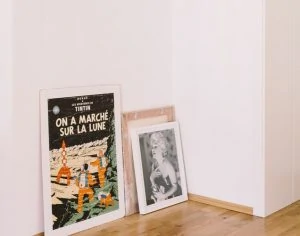Maintaining the best paint color of your interior walls doesn’t mean you have to apply a fresh coat of paint each time to repair the errors like dents, dings, and cracks. One alternative is to touch up the walls to keep the surface of your wall looks flawless. It is actually in our nature that 
Fresh Paint and Touch Ups:
The main problem that comes with touchups is that it is really difficult to make fresh paint match seamlessly with old interior wall paint. The existing paint color might be slightly off or the glossiness might not match properly. Also, there could be other problems like the visible brush marks on the wall. It is true that small touchups can really be difficult to blend, and even the professional painter fails to do so.
Mentioned below are the best situations when a touch-up is the better option than repainting.
Walls with Very Low or No Sheen:
If there is flat paint on your interior walls, it is a better option to touch-up to repair dents, dings, and cracks. In fact, flat paint is much easier to touch up than satin or semi-gloss paint. You can go for touch-ups in case you have flat paint on your walls and the paint is not faded or dirty. However, it is important to get an exact match paint to touch it up. The golden rule is to apply the touch-up paint to the smallest area possible and then using a roller to blend the edges of the new paint with the older paint.
Walls with Very Little Flaws:
If your walls have very little flaws like a small crack, touch-up is the best option. In this type of case, you can consider using an artist’s brush to properly blend the touch-up paint exactly onto the damaged spot. It is important to use only a small amount of touch-up paint otherwise it will bubble out the surface. It is also vital to avoid feathering the edges.
If you notice any little damages on your interior walls, you may want to work with a professional paint contractor who is an expert in touch-ups. The professionals are the best person to correct the damages on your walls by using touch-ups as necessary.
